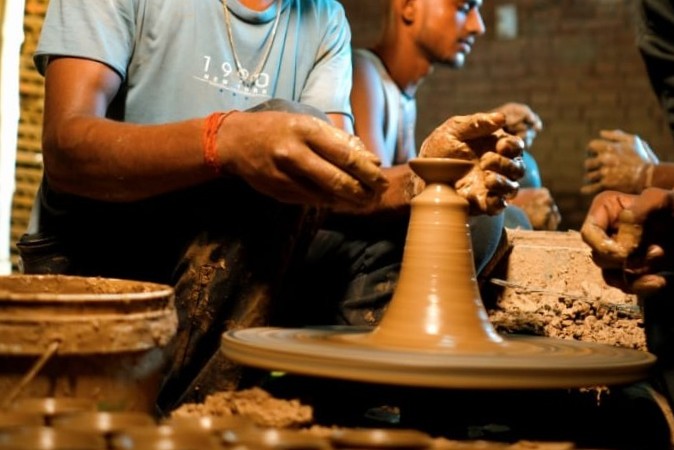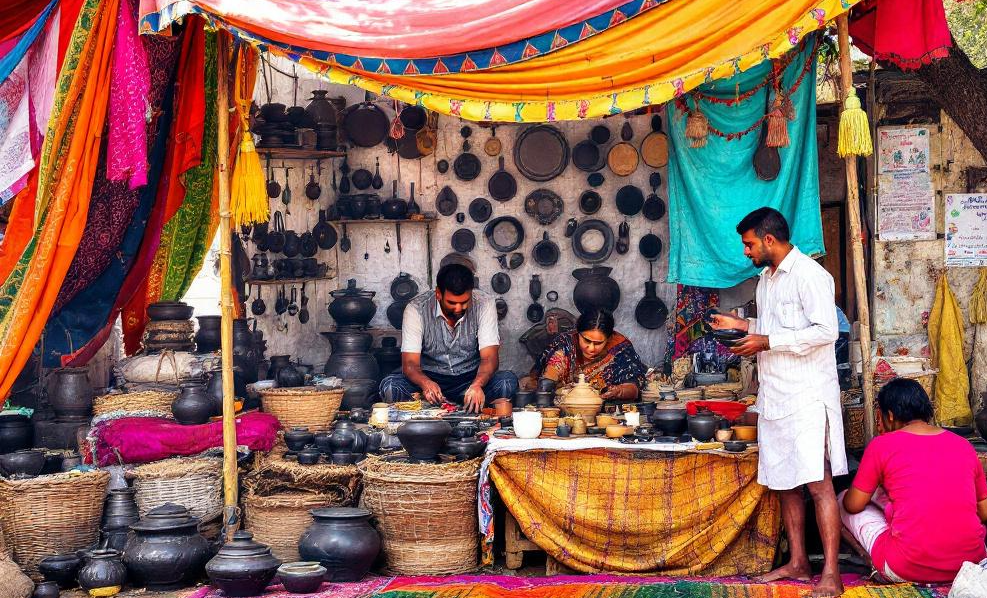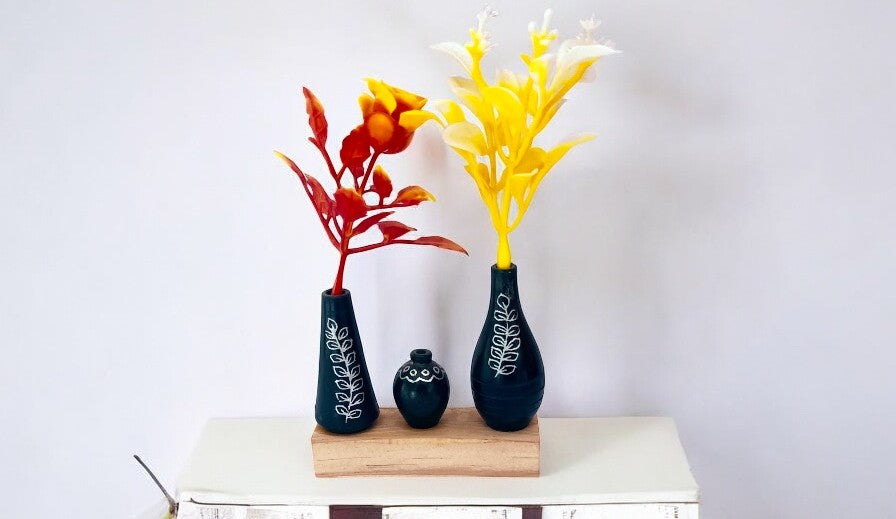Behind every handcrafted vase, lamp, or cup lies a quiet story — one that begins with earth and transforms, slowly and deliberately, into art.
At MittiArtisans, we honour not just the final piece, but every step that brings it to life. One step happens quietly behind the scenes. The other, right in front of your eyes.
In pottery, two stages define everything that follows: clay preparation and wheel shaping.
The first gives the clay its strength. The second gives it its soul.
Together, they turn raw earth into lasting form — where patience, skill, and beauty begin to take shape.
Let’s take you into that process.
🌱 Step 1: Preparing the Clay — The Groundwork of Good Pottery
Before the wheel spins, the clay must be made ready.
Artisans soak, sieve, and knead it by hand — a process that softens the earth, removes impurities, and builds the strength needed for shaping.
Well-prepared clay won’t just hold form — it responds to the potter’s touch like a living material.
🌀 Step 2: Shaping Clay on the Potter’s Wheel
With the clay ready, the next phase begins — and it’s nothing short of a dance between hand, wheel, and form.
🪑 The Setup
The potter sits with a prepared lump of clay centered on a rotating wheel. It looks simple — but this step requires exceptional skill.
If the clay isn’t perfectly centered, the piece will wobble and collapse.
🌀 Centering
This is the foundation of everything. Using both hands, the potter applies firm pressure to center the clay — aligning its mass so it spins symmetrically.
Why it matters:
If the clay isn’t centered, the final form won’t be balanced or even. Centering is often considered the most challenging part of wheel throwing.
✋🏽 Opening the Form
Once centered, the potter presses into the middle of the clay to create a hollow — the beginning of any vessel. The depth and width of this hollow define what the piece will become: a bowl, vase, lamp, or cup.
🧱 Pulling Up the Walls
The potter gently pinches and pulls the walls of the clay upward — in rhythm with the spinning wheel — using a combination of pressure and finesse. This is where the form begins to rise and take shape.
Why it matters:
The strength and evenness of the walls determine not only the look of the piece, but also its functionality and durability.
🎯 Refining the Shape
The potter uses wooden tools or fingers to shape the curves, smooth the surface, and define the final silhouette — be it a rounded vase or a tall, narrow bottle. Throughout, water is used to keep the clay soft and workable.
🌬 Trimming & Finishing
After the piece is shaped, it’s left to dry to a leather-hard stage. At this point, it’s turned upside-down on the wheel for trimming — refining the base, foot ring, and overall balance.
Why it matters:
This stage ensures the piece sits well, looks clean, and reflects the artisan’s touch — even at the bottom.
🖤 Why This Process Is So Important
In an industrial world where products are mass-molded and machine-made, shaping on the wheel is a slow, meditative act of craftsmanship. Each piece reflects:
-
The artisan’s hands
-
The time taken to center, balance, and refine
-
A lineage of skill passed down over generations
At MittiArtisans, we celebrate this human touch. No molds. No replicas. Just one-of-a-kind pieces born of real connection between potter and clay.
✨ From Wheel to You
Whether it’s a conch shell lamp, a terracotta bottle, or a miniature vase, the piece you hold began as earth — soaked, wedged, shaped, and centered with care.
Each curve tells a story of movement, of process, of patience.
And when you bring that piece into your home, you’re not just adding décor —
you’re bringing home something truly human.
🛒 Explore Handcrafted Pottery
Browse our collection of terracotta and black pottery —
crafted with nothing but earth, fire, and heart.
👉 Shop Now
📸 Follow behind-the-scenes on Instagram @mittiartisans






